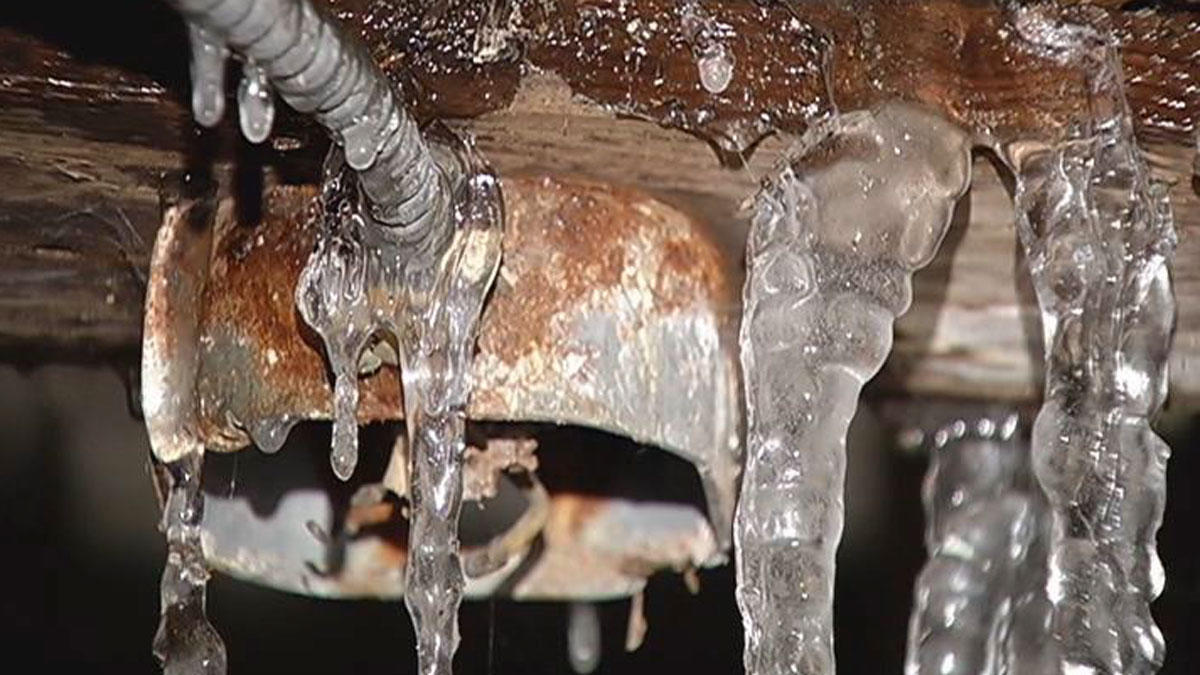Protecting Your Pipes from Freezing Damage: Essential Approaches
Protecting Your Pipes from Freezing Damage: Essential Approaches
Blog Article
How do you actually feel in relation to How to prepare your home plumbing for winter weather?

Cold weather can ruin your plumbing, particularly by freezing pipelines. Here's just how to avoid it from taking place and what to do if it does.
Introduction
As temperature levels drop, the danger of frozen pipelines increases, potentially leading to costly fixings and water damage. Recognizing how to stop icy pipes is crucial for house owners in cold climates.
Comprehending Frozen Pipes
What triggers pipelines to freeze?
Pipelines freeze when subjected to temperatures below 32 ° F (0 ° C) for extended durations. As water inside the pipes freezes, it increases, putting pressure on the pipe wall surfaces and potentially causing them to break.
Risks and damages
Frozen pipes can lead to water supply interruptions, property damage, and expensive fixings. Ruptured pipes can flood homes and cause considerable architectural damages.
Indicators of Frozen Pipes
Recognizing frozen pipelines early can avoid them from rupturing.
Just how to determine frozen pipes
Look for reduced water circulation from faucets, unusual smells or sounds from pipelines, and visible frost on subjected pipelines.
Avoidance Tips
Shielding at risk pipelines
Wrap pipes in insulation sleeves or use warmth tape to protect them from freezing temperature levels. Focus on pipes in unheated or exterior locations of the home.
Heating techniques
Maintain interior areas appropriately heated, specifically locations with plumbing. Open up closet doors to enable cozy air to circulate around pipes under sinks.
Safeguarding Exterior Plumbing
Garden pipes and exterior taps
Detach and drain pipes garden hose pipes before wintertime. Set up frost-proof spigots or cover outside faucets with insulated caps.
What to Do If Your Pipelines Freeze
Immediate activities to take
If you suspect icy pipelines, keep taps open to relieve pressure as the ice thaws. Make use of a hairdryer or towels taken in hot water to thaw pipelines gradually.
Long-Term Solutions
Structural changes
Think about rerouting pipelines away from exterior wall surfaces or unheated locations. Include extra insulation to attics, cellars, and crawl spaces.
Upgrading insulation
Purchase high-grade insulation for pipelines, attics, and walls. Appropriate insulation assists keep regular temperature levels and reduces the danger of icy pipes.
Final thought
Stopping frozen pipelines calls for aggressive actions and quick actions. By recognizing the reasons, indicators, and safety nets, house owners can safeguard their plumbing during winter.
5 Ways to Prevent Frozen Pipes
Drain Outdoor Faucets and Disconnect Hoses
First, close the shut-off valve that controls the flow of water in the pipe to your outdoor faucet. Then, head outside to disconnect and drain your hose and open the outdoor faucet to allow the water to completely drain out of the line. Turn off the faucet when done. Finally, head back to the shut-off valve and drain the remaining water inside the pipe into a bucket or container. Additionally, if you have a home irrigation system, you should consider hiring an expert to clear the system of water each year.
Insulate Pipes
One of the best and most cost-effective methods for preventing frozen water pipes is to wrap your pipes with insulation. This is especially important for areas in your home that aren’t exposed to heat, such as an attic. We suggest using foam sleeves, which can typically be found at your local hardware store.
Keep Heat Running at 65
Your pipes are located inside your walls, and the temperature there is much colder than the rest of the house. To prevent your pipes from freezing, The Insurance Information Institute suggests that you keep your home heated to at least 65 degrees, even when traveling. You may want to invest in smart devices that can keep an eye on the temperature in your home while you’re away.
Leave Water Dripping
Moving water — even a small trickle — can prevent ice from forming inside your pipes. When freezing temps are imminent, start a drip of water from all faucets that serve exposed pipes. Leaving a few faucets running will also help relieve pressure inside the pipes and help prevent a rupture if the water inside freezes.
Open Cupboard Doors
Warm your kitchen and bathroom pipes by opening cupboards and vanities. You should also leave your interior doors ajar to help warm air circulate evenly throughout your home.

As a keen reader about Winter Plumbing Precautions: Preventing Frozen Pipes, I was thinking sharing that article was a good thing. Sharing is good. You won't know, you will be doing someone a favor. I am grateful for being here. Come back soon.
Set Up An Appointment Report this page